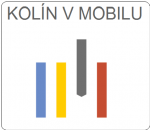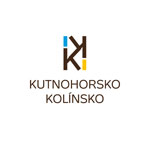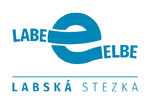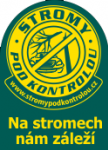Basic information
The town of Kolín is situated in the fertile lowlands on both banks of the river Labe. Rich archaeological discoveries from the town and its surroundings show that this place was settled long before it is stated in extant written records.
In the regional museum we can find numerous relics commemorating all known settlements in Bohemia. There used to be ancient crossroads of three important trading roads formed as early as in the Roman Empire. The presence of Slavs can be proved even in the 6th century BC. A lot of discoveries of fortified places and burying-places are the evidence of dense population in this area in 9th and 12th centuries. The first written parchment mentioning Kolín dates back to 8th September 1261. In 1437 Bedřich of Strážnice built a caste on the site of a ruined monastery, the castle was afterwards rebuilt into a chateau. Many privileges awarded by Charles IV and Wenceslas IV supported the town development and wealth. At that time, Kolín belonged to the most prosperous towns of the Bohemian kingdom. The biggest humiliation and poverty came during the Thirty-year War which almost ruined the town.
Kolín (in German: Kolin, also Köln an der Elbe) is a regional town in the east of Central-Bohemia, situated on the river Labe. Kolín has more than 30 000 inhabitants, the area of the town is 35 km², the average altitude 220m. The town is an important rail junction. The main industry comprises chemical, car, engineering, food-processing and polygraphic branches.
The name Kolín probably comes from an old-bohemian word "kolitiʺ, which means to drive stakes. The name is connected with the location of Starý Kolín in a frequently flooded area on the junction of the Klejnarka and Labe. People used to fix the ground using wooden stakes. Afterwards a more suitable location was chosen for the developing trading settlement. The new location was on an elevated place, 7 km westwards. The new village (and later on the royal town) kept the name of the original settlement.
There are also other less likely explanations of the name origin. The name could be also derived from its location on an elevated place, a hill - "colinus" in Latin, which is in disagreement with the existence of Starý Kolín, though. According to another theory, the Latin word Colonia is connected with the arrival of German colonists to Bohemia.
In spring 2005, the car factory TPCA (Toyota-Peugeot-Citroën) was opened on the northern outskirts of the town. The company employs 3 000 people, the production capacity is 300 000 cars a year. The first model is the trio Toyota Aygo, Peugeot107 and Citroën C1, the cars were made together and they are identical in 92 %, these cars were launched around the half of 2005.
The chemical plants are Draslovka, Lučební závody and refinery Paramo (used to be KORAMO).
In Zálabí there is a thermal power-plant with the original name ESSO, which was realized in 1932 by Power-plant union of central-Labe regions (Elektrárenský svaz středolabských okresů) according to the project of the architect Jaroslav Frágner. By the right bank of the river in Upper Island (Horní ostrov) there is a hydroelectric power-station which is a part of Masaryk bridge. Both power-plants are run by Dalkia a.s. Kolín, which is a branch of French company Dalkia and its Czech subsidiary Dalkia ČR. This subsidiary deals with production and distribution of thermal energy which supplies both industry and inhabitants of Kolín.
























 Máte zájem dostávat nejnovější zprávy přímo do vaší e-mailové schránky?
Máte zájem dostávat nejnovější zprávy přímo do vaší e-mailové schránky?